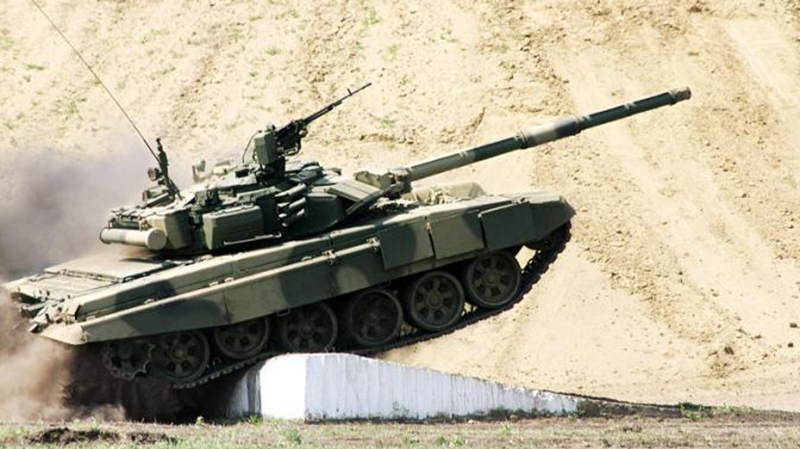
Original by Aleksandr Sitnikov published by Svobodnaya Pressa; translated from Russian by J.Hawk
Iran’s Central Bank Chairman Valiula Saifa, in the near future Tehran will receive $30 billion which were frozen due to Western sanctions. This money will most likely be used to procure new weapons, judging by the statement by Ayatollah Khamenei on the need to quickly strengthen the armed forces. Even though the JCPOA (also known as 5+1) agreement prohibits Tehran not only build but also test missile weapons, but also procure advanced conventional weapons. It’s important to note that JCPOA does not deprive Iran of its right to self-defense.
This last formulation has been a controversial one from the beginning. US Senate Armed Forces Committee Chair John McCain was categorically against lifting the comprehensive arms embargo. Nevertheless the supporters of only limited restrictions won on the grounds that older weapons wouldn’t threaten Iran’s neighbors, especially Saudi Arabia.
On the other hand, the significant losses suffered by the Islamic Revolution Guards Corps (IRGC) fighting against ISIS on Syria’s territory suggest Iran’s military lacks combat effectiveness. In any event, that’s what many international security experts believe. “Iran’s military potential is very low,” writes Ben Moors, a leading expert at IHS Jane’s. “Tehran has no air force to speak of. Its navy is weak. Ground forces lack command and control facilities. If one is to look at the Saudi defenses, the kingdom imported $7 billion of weapons last year, UAE $4 billion, Oman $1 billion. Iran imported only $550 million.”
According to IHS Jane’s estimates, Tehran would have to import $40 billion of weapons to ensure an adequate level of security. Iranian politicians and soldiers are naming similar numbers. The urgend need to carry out a military modernization was the main reason Khamenei agreed to the nuclear deal. Influential Saudi political scientist Jamal Khashoggi predicted that after Assad’s army’s defeat (were it to take place) mobile detachments of the Islamic State would invade Iran and spread chaos there. Syria’s example shows that fighting them would require mobile armored forces.
Indeed, Iranian Land Forces commander, Brigade General Akhmad Reza Pourdastan said that he “really hopes for rapid deliveries of T-90s and for Iranian specialists to go to Russia to learn how to operate modern equipment.” Iran is not only motivated by a sense of grievance. The events in Ukraine and the war in Syria demonstrated Russian tanks’ capabilities, whose reputation was badly damaged during the catastrophic war against Saddam Hussein. But now the T-90’s popularity is increasing, with India having about 1,000 of these vehicles in service where they earned a very positive reputation.
The choice of weapons is influenced by many factors, including the fact that the T-90 was created on the basis of the legendary Cold War-era T-72. That very same tank which was supposed to march toward the English Channel through the Fulda Gap. In the ’80s, Western experts considered it a very balanced and cost-effective fighting machine, and a more reliable one than the T-64 which was not well liked by Soviet tankers, to put it mildly.
The tank’s history, its characteristics, repairability, and ease of operation are all important factors. Moreover, military men, including Iranian ones, understand that armored vehicles are expendable in spite of their fearsomeness and high cost. Over 100 of the 140 M1A1 tanks supplied by the US to Iraq have been destroyed. ISIS militants claim they were easy to destroy. In other words, in a poorly prepared operation all tanks burn, no matter how expensive they are. The US demand $2.4 billion from the Iraqis for the next batch of 170 M1A1s, or approximately the same amount as India paid for its 1,000 T-90s.
The number of armor available in a conflict does matter. Out of the 700 elderly early-model T-72s which the Syria bought from USSR, 300 are still in service in spite of their obsolete armor protection and many years of fighting. The Syrians are in general agreement these tanks play a very important role. In short, Tehran knows what it’s buying.
Persian political scientist and military expert Abutsar Bagheri writes that Iran fully realizes that buying a large number of T-90s would support Russia’s economy. In other words, both sides need one another, and that emerging alliance, although based on calculation, is destined for strategic cooperation. It’s laos clear that the tank contract will cause considerable displeasure and anger within two major power centers, US and Saudi Arabia. “But Iran has always said that it will take measures to protect not only its national interests but also the oppressed nations of the region,” Bagheri cites Khamenei’s words. “Our military instructors and advisors are in Syria and Iraq today in order to help these countries fight terrorists.”
And tomorrow…Tomorrow will depend on the Saudis’ treatment of its Shia minority. The cruel execution on January 2, 2016 of Nirm Al-Nirm, a prominent Shia cleric, frightened even the US. Mohsen Milani, the executive director of the Center of Strategic and Diplomatic Studies at the University of South Florida, pointed out that John Kerry demanded al-Nimr’s release on many occasions. Washington reminded the kingdom that Saddam Hussein’s execution of Mukhammed al-Bakir al-Sadr in April 1980 became “the reason for the war between Iran and Iraq, which started six months later.”





